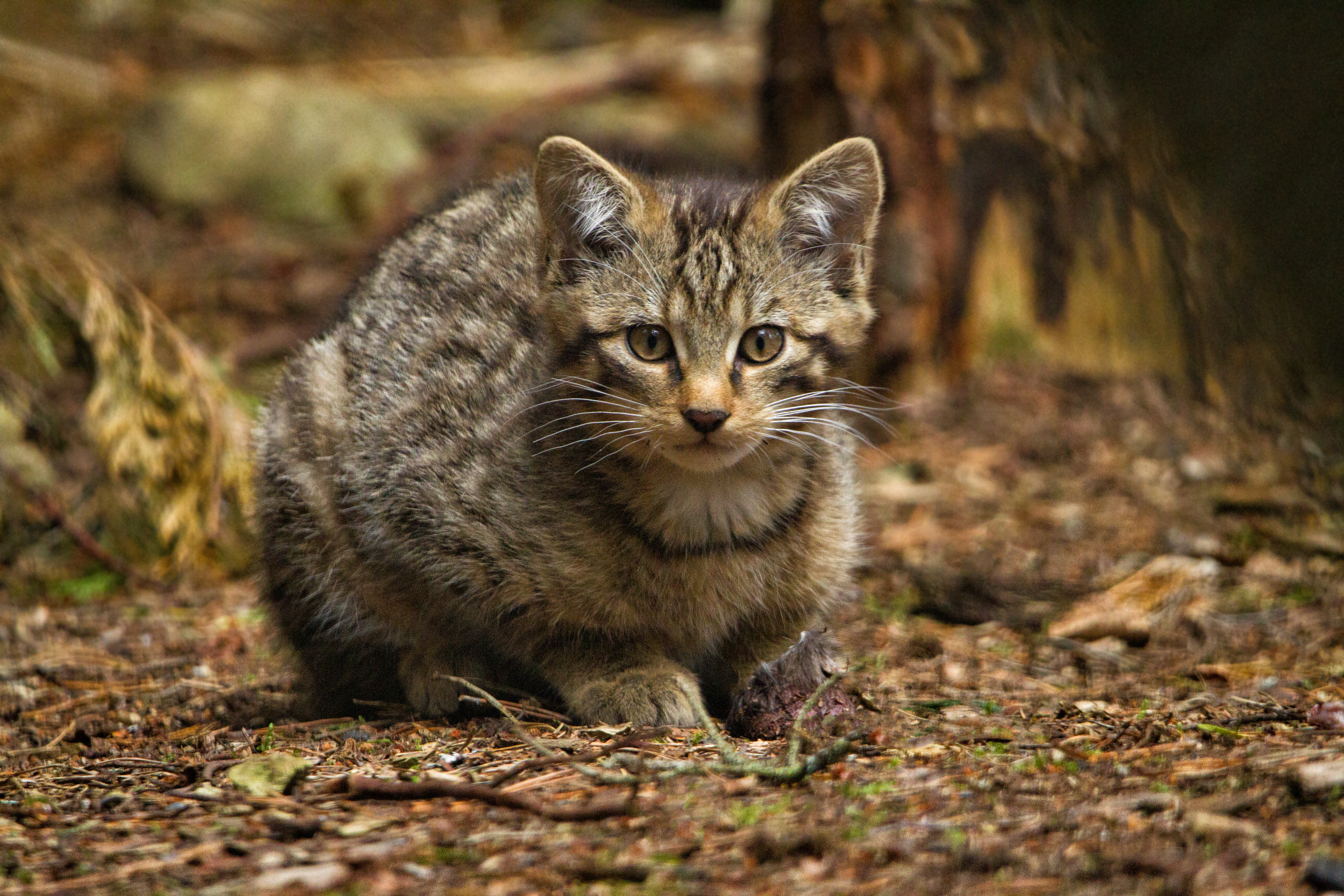Wildcats and Clashindarroch forest
Saving Wildcats is a partnership project based in the Cairngorms National Park and we have to focus our activity in this area to ensure our efforts to save Scotland’s wildcats are successful.
Our plans follow the latest recommendations for wildcat conservation in Scotland from the International Union for Conservation of Nature (IUCN) cat specialist group which concluded the last remaining hope for the species is to restore the population through the release of wildcats, and by mitigating any threats in and around the project area. This review confirmed that the population of wildcats in Scotland is 'too small, too fragmented and too hybridised' to be viable, and clearly states that there is 'no confirmed evidence' for alternative claims about wildcat population numbers in Scotland.
While Clashindarroch forest is outside of the Saving Wildcats project area, we remain in close contact with our partners at Forestry and Land Scotland (FLS) on any developments regarding potential wildcat sightings. We will be sure to assist them whenever appropriate, for example by conducting genetic analysis.
As the forest has a mosaic of habitats, including felled areas, replanted areas and stands of mature timber, both published and ongoing research indicates that the area is very suitable for wildcats. Our Highland tigers use edge habitats for moving through the forest and hunt in open areas, such as clear fells, which support high numbers of field voles. Only around 5% of the planted forest was felled for the windfarm and previous surveys of similar habitats suggest the population of field voles will be increasing dramatically in this area.
Though it is highly unlikely that any of the wild living cats in this area are wildcats, the FLS team take significant measures to protect endangered wildlife, including consulting wildcat experts and biologists on forest management and mitigation for the species. Part of their approach involves carrying out surveys well in advance of any forest management and then modifying or rescheduling the work as necessary. Very little work is carried out in the forest in the wildcat breeding season. FLS have also constructed numerous artificial dens for wildcats. There are more details about this on the FLS website, and the Vattenfall website has more detail on the wildcat protection plan in place.
Importantly, genetic testing of cats in Clashindarroch as part of the work of Scottish Wildcat Action in previous years showed that none of the individuals tested have scored highly, meaning their levels of hybridisation with domestic cats are too high for them to be considered wildcats. You can find out more about hybridisation and our partnership project in the wide range of FAQs on our website.
To further support wildcats nationwide, we will soon be appointing a Saving Wildcats field officer who will carry out scoping work outside of the release site, as well as engaging volunteer groups in the Priority Areas previously identified by Scottish Wildcat Action. This means we will be able to closely monitor situations involving wildcats outside of the Cairngorms National Park and identify any other potential future release sites.
Sign up to stay up to date with the latest Saving Wildcats project developments.

